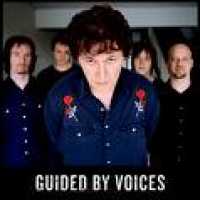Gabby landed a gig as a back-up guitarist for Charley 'Tiny' Brown. He quickly mastered the steel guitar without ever learning to read music. Because most musicians of the time only played in bars, Gabby also formed a drinking habit that stuck with him throughout his life.
Though a master of the steel guitar, Gabby is most known for his mastery of the slack-key guitar. Gabby learned slack-key from Herman Keawe whom Gabby acknowledges as being "the greatest slack-key player of all time." Herman, like Gabby, lived in the Kaka'ako area.
Gabby married Emily at age 17 in 1938. They had ten children, four daughters and six sons.
In 1946, Gabby made his first recording, "Hiilawe," for the Bell Records label. This may be the first record of a Hawaiian song with slack-key guitar. The following year came "Hula Medley," the first record of a slack-key guitar instrumental. During this period he made two other influential sides for Bell, the vocal "Wai O Ke Aniani" and the instrumental "Key Koalu" (a misspelling of "Kī Hōalu," the Hawaiian term for "slack key"), plus another version of "Hi`ilawe" for Aloha Records.
Gabby played with many of the great bands and musicians of his time, including Andy Cummings, Lena Machado, and Ray Kinney. He also appeared on Hawaii Calls, a popular international radio show that began in the 1930s. Eventually, Gabby moved Emily and the children to Waimanalo, which had become a popular second home location for many musicians. The all-weekend jam sessions at the Pahinui home were legendary.
Examples of his session work from the late 1950s through the 1960s can be found on the two volumes of Hawaiian Slack Key Guitar (Waikiki Records 319 and 320) and two more LPs titled Kani Ka Pila! Let's Play Music! Volumes 1 and 2 (Hula Records 517, 1966; Hula 531, 1969). These are combo recordings (steel guitar, slack key guitar, uke, bass, vocals, sometimes percussion) made with bandmates such as Atta, Barney, and Norman Isaacs, Charles Kaipo Miller, and a young Peter Moon, and they reflect the style of nightclub music popular around Waikīkī at the time.
A 1961 solo session organized by Dave Guard of the Kingston Trio features just Gabby, with bass and `ukulele backing, doing some of his classic material, including new versions of three of his four 1946-47 tracks. No record company was interested in the material, however, and it was not released until 1978. The final package was Pure Gabby (Hula 567), a two-record set, one LP consisting of the music and the second of an interview conducted by Guard.
With his success, Gabby still had financial trouble. He made ends meet by working for City and County of Honolulu road crews, doing pick and shovel work.
[edit] Later career
The Hawaiian Renaissance of the '70s launched a cultural reawakening of all things Hawaiian. Gabby played an important part in the rise of this Hawaiian Cultural Renaissance. First there were the albums recorded through the 1960s with the enormously popular and influential Sons of Hawaii, which he started with ukulele virtuoso Eddie Kamae: their self-titled debut album (Hula HS 503, 1961); Music of Old Hawaii (Hula HS 506, 1964); and Folk Music of Hawai`i (Panini 1001, 1971).
Then, starting in 1972, he made four albums with what came to be called the "Gabby Band." The first album featured Gabby backed by four of his sons plus old friends Leland "Atta" Isaacs and bassist Manuel "Joe Gang" Kuhapu, but the group eventually expanded to include Sonny Chillingworth, younger-generation players Peter Moon and Randy Lorenzo, and mainland admirer Ry Cooder. The albums are: Gabby (1972; often called "Brown Gabby" or "The Brown Album" because of its sepia cover photo) Rabbit Island Music Festival (1973) Gabby Pahinui Hawaiian Band, Vol 1 (1975) Gabby Pahinui Hawaiian Band, Vol 2 (1976)
As he enjoyed his new success in the '70s, his life-long drinking and a bad road crew accident left his health failing. He retired from road work but took up teaching in the City and County's cultural programs. He died in 1980 at the age of 59.
Gabby was memorialized in Israel Kamakawiwo'ole's haunting performance of "Somewhere Over the Rainbow/What a Wonderful World" on his 1993 Facing Future album. In the opening moments of the song, Israel can be heard saying, "'Kay, this one's for Gabby."
Gabby's children are active in the Hawaiian music scene, notably Cyril Pahinui, Bla Pahinui and Martin Pahinui, all of whom played on the Gabby Band recordings and have since become professional musicians. (Philip, who played on the first two "Gabby Band" albums, chose not to pursue music professionally.)
[edit]
References
"Gabby Pahinui" [interview] in Da Kine Sound: Conversations with People who Create Hawaiian Music, ed. Burl Burlingame and Robert Kamohalu Kasher (1978, Press Pacifica)
Hawaiian Son, James D. Houston with Eddie Kamae (2004, Ai Pōhaku Press) The History of the Slack Key Guitar, CD booklet notes by Jay Junker, Harry B. Soria, Jr., and George Winston (1997, Hana Ola Records) "Pahinui, 'Gabby' Charles Philip," unsigned, in Hawaiian Music and Musicians, ed. George S. Kanahele (1979, University Press of Hawaii)
"Sons of Hawai`i," Keith Haugen, in Hawaiian Music and Musicians
